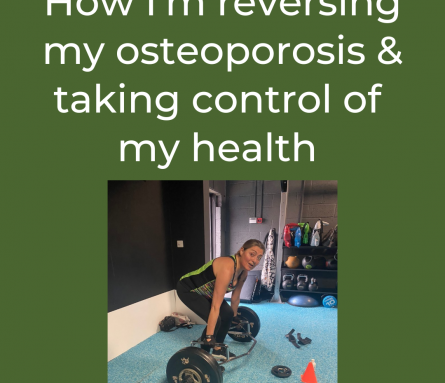My osteoporosis diagnosis in 2021 came as something of a shock to me. I declined the offer of medication, because I didn’t like the look of the potential side effects, and wanted to understand why I was advised to take vitamin D and calcium when my blood levels looked fine.
It was time to take matters into my own hands.
I started by ensuring I was eating enough protein every day, and at every meal. You need at least 1.2g per kg of body weight in mid-life and more if you do a lot of strenuous exercise.
I switched my exercise routine to doing weight-bearing exercise 2-3 times a week. Sending a signal to my bones that they need to keep re-building and stay strong. Bones are not inert, they are living tissue!
I checked my calcium intake was optimal, not too low or too high using this great online calculator from The Osteoporosis Society: https://www.osteoporosis.foundation/educational-hub/topic/calcium-calculator
Plus alongside the vitamin D3, it’s vital to take vitamin K2 and magnesium to ensure that the calcium actually gets into your bones rather than into your body’s tissues and arteries [which is damaging].
Finally, your gut microbes and immune system both have a role to play in healthy bones. This means that eating a diet rich in lots of different types and colours of vegetables and low-sugar fruits can make a difference too.
Today I had a private DEXA scan to monitor my progress – 18 months is not a long time in bone health terms, but I wanted to know if what I’m doing is making a difference and I was delighted to find out that my lumbar spine T-score has improved slightly from -3.5 to -3.2. My 10-year fracture risk has reduced from 12% to 8% so I’m moving in the right direction!
Way to go!

